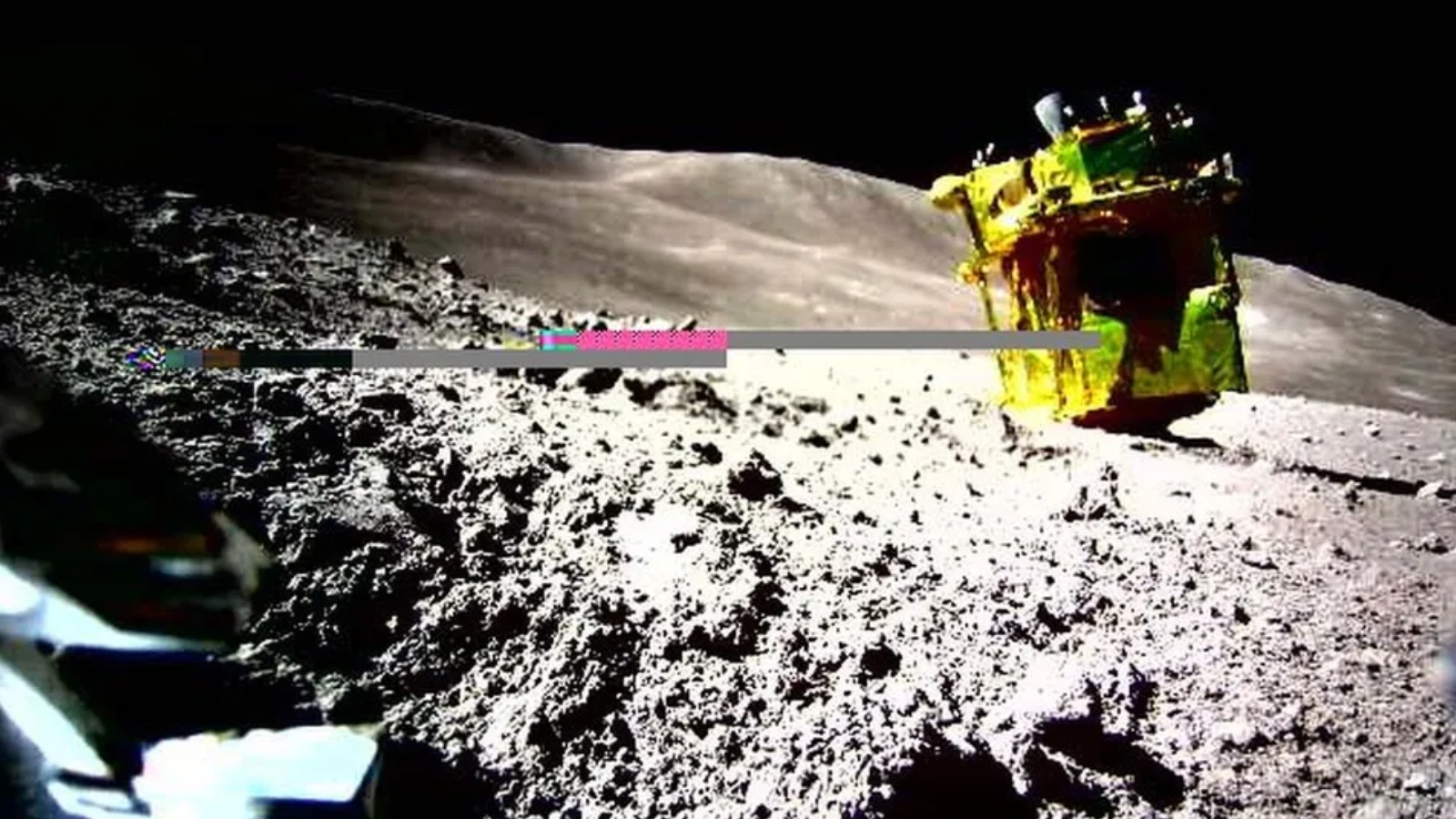
Japan's SLIM lander touchdown may have given an entirely new definition to the expression "on the nose."
Japan Aerospace Exploration Agency (JAXA) representatives revealed that the Smart Lander for Investigating Moon (SLIM) made a strange but precise landing on the moon. Speaking at a press conference on Thursday (Jan. 25), JAXA scientists said that SLIM had touched down within 328 feet (100 meters) of its selected lunar landing site on Jan. 19, accomplishing its primary mission of making a pinpoint landing.
"We proved that you can land wherever you want, rather than where you are able to," SLIM project manager Shinichiro Sakai said at the press conference, according to Reuters. "This will inspire more and more people, desirably Japanese missions, to try to land on unexplored places on the moon."
Related: Japan's SLIM moon lander photographed on the lunar surface (image)
SLIM, which is nicknamed "moon sniper," marks a significant improvement in terms of landing precision when compared to previous lunar probes, which have set down within miles of their target locations rather than meters.
JAXA says the landing could help validate the vision-based navigation used by SLIM, which could be a powerful tool for future exploration of the lunar surface. "The fact that we were able to achieve accuracy of less than 10 meters, possibly within 3 to 4 meters, is an extremely significant accomplishment for future lunar explorations," Sakai said, according to Japan Times.
Images of SLIM taken by the baseball-sized robot rover Lunar Exploration Vehicle-2 or SORA-Q, which was released by the spacecraft just before landing, revealed that in achieving this precise landing, SLIM came down rotated at 90 degrees, effectively landing on the tip of its nose.
Japan Times reported that Sakai explained that JAXA scientists believe that SLIM's strangely orientated landing came about as a result of one of its two main engines stopping during the 30 seconds or so of touchdown and at an altitude of around 165 feet (50 meters) over the moon.
Japan Times added that Sakai said that the loss of the engine was the result of an undisclosed "external factor," adding a camera had captured an engine nozzle lying on the lunar surface. The team continues to analyze the cause of this failure.
This engine failure caused SLIM to drift 180 feet (55 meters) away from its chosen landing site. Without the glitch, SLIM could have landed as close as 10 to 13 feet from the selected region of the moon.
The SORA-Q image shows the shift in position meant that SLIM set down on the slopped ridge of a lunar crater. This incline caused the spacecraft to roll westwards onto its nose.
The positioning of SLIM means that the spacecraft has been unable to use its solar panels to generate electricity thus far, with engineers switching off SLIM's battery around two and half hours after touchdown to preserve power. JAXA scientists remain hopeful that this situation will change when the direction of sunlight on the moon changes.
But all hopes of SLIM reviving will vanish with the sunlight next week on Feb. 1 when night falls on the moon, bringing intense cold. "SLIM is not designed to survive a lunar night," Sakai explained.
The SLIM landing makes Japan only the fifth country to make a soft landing on the moon after Russia (then the Soviet Union), the U.S., China, and India.
Interest in making precision landings on the moon is ramping up as several nations seek to return human crews to the lunar surface for the first time in decades. Landing close to locations thought to be rich in water ice and other resources will be key to establishing a sustainable human presence on the moon. The United States aims to land crews on the moon no earlier than 2026 with its Artemis 3 mission, while China wants to put its own boots on the moon by the end of the decade.







